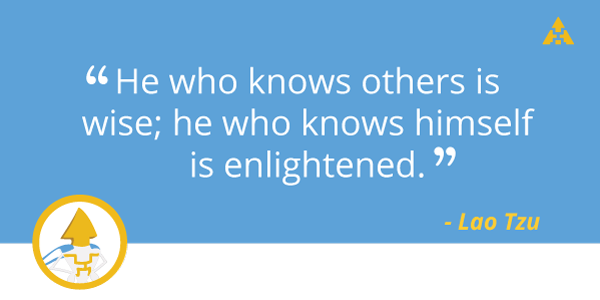Understanding Workplace Culture
We’re all familiar with culture as it varies between regions or countries, but what about culture as it varies between offices or companies?
Every company has its own unique personality, just like your friends or family do. We refer to each business’ unique personality as its “organizational culture.” Organizational culture is determined by the specific values, beliefs, and norms regularly expressed by employees at a place of work.
Working at an organization with values inconsistent with your own can be distressing, disheartening, and even depressing. No matter how great the position or perks, if the work environment is a cultural mismatch, you’ll likely feel unfulfilled.
MPOWER Pro-tip 1
Colleges and universities also have distinct “cultures.” Do your research before accepting an offer at face value!
You often hear interviewers say a candidate “fits” or “doesn’t fit” as an explanation for why a particular applicant was or was not advance to the next round of hiring. Most companies actively search for people who demonstrate company values, habits, and morals.
You should be sure an office’s culture works for you as well. While it’s the interviewer’s responsibility to assess your qualifications, it’s up to you to determine whether a particular employer is aligned with your needs and values.
MPOWER Pro-tip 2
Poke around the company’s website to see if they mention their culture. Many companies have pages dedicated to discussing what it’s like to be a part of their team or what their values are.
MPOWER Pro-tip 3
Check out the organization’s social media profiles. You can learn a lot from what they share with their customers on Facebook and what their employees are doing on LinkedIn.
What factors should be used to evaluate company culture? Career Leader suggests that four primary characteristics make up organizational culture:
- 1. Collaboration and Consideration describes how an organization values social elements of the workplace. This measurement considers team relationships, atmosphere, and the overall social ”tone” of the organization.(+) An organization high in collaboration and consideration is characterized by a sense of warmth and friendliness; management emphasizes the collective happiness and camaraderie of its employees as important to the success of the organization.
(-) In contrast, organizations low in collaboration and consideration concentrate on what’s necessary to “get the job done.” They are typically results-oriented and place emphasis on personal performance, with individuals focusing on the tasks at hand.
- 2. Extraversion and Decisiveness describes how important decisions are made, and how everyday work is completed – individually or in a group.(+) Organizations high in extraversion and decisiveness value assertive and open voices, even – and particularly – dissenting ones. People view meetings, discussions, debates, and negotiations as necessary and even enjoyable.
(-) Organizations low in extraversion and decisiveness value environments where work is more solitary. Decision-making focuses on consensus agreement, and decisions are made after checking in with the group.
- 3. Innovation and Change describes how an organization’s values consistency and adaptability. Considerations for this metric include how favorably the organization views creativity and how they assess risk.(+) Organizations high in innovation and change generally focus on pioneering new methods of doing business. These organizations value new ideas and improvements, and often focus on employee feedback and growth.
(-) Organizations low in innovation and change utilize standard operating procedures more thoroughly, and prefer established, predictable processes. “If it ain’t broke, don’t fix it” is the prevailing motto, and proven, traditional methods are the standard.
- 4. Precision and Planning measures how impulsive or careful a company is, and the ratio of action to planning involved in its operations.(+) An organization high in precision and planning requires thorough examination of all the working parts of a business plan before okaying its execution. These organizations operate steadily and deliberately, due to their detail-oriented natures.
(-) Organizations low in precision and planning move at a quick pace and value action-oriented thinking. Successful individuals within these organizations are flexible multitaskers and thrive in unpredictable environments.
What’s the best way to tackle workplace culture and come out on top?
First, figure out where you fall on the above scales and which traits are the most important to you. Then, determine where your target company or organization falls.
Rarely will you find a work environment totally aligned with your values, but you should be able to find organizations where the culture and your values can coexist. Remember:

